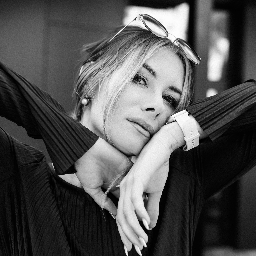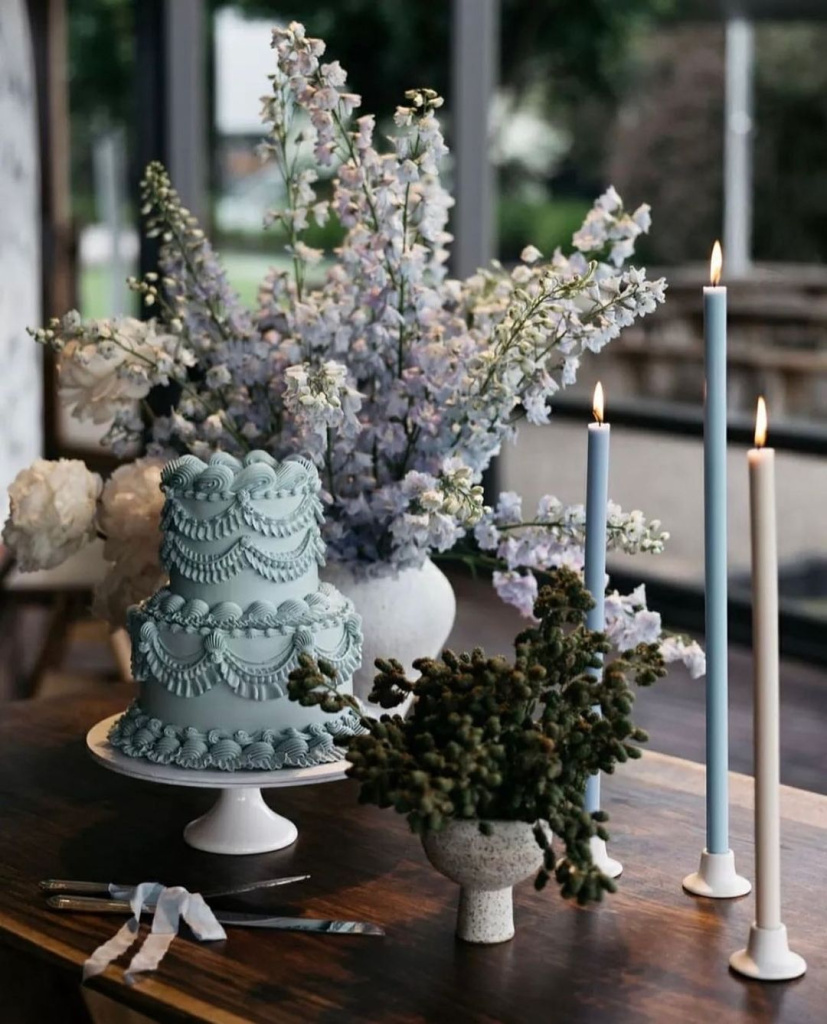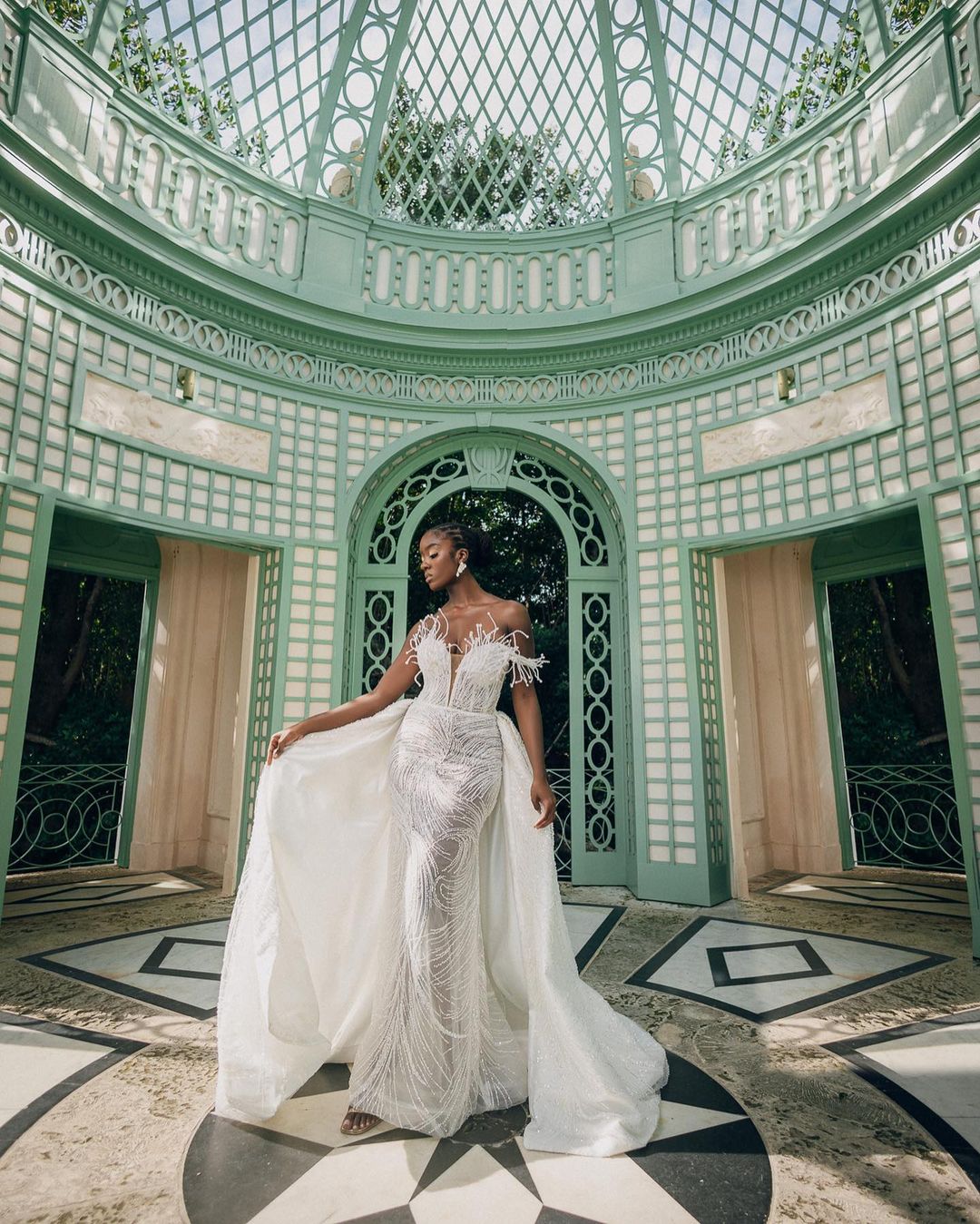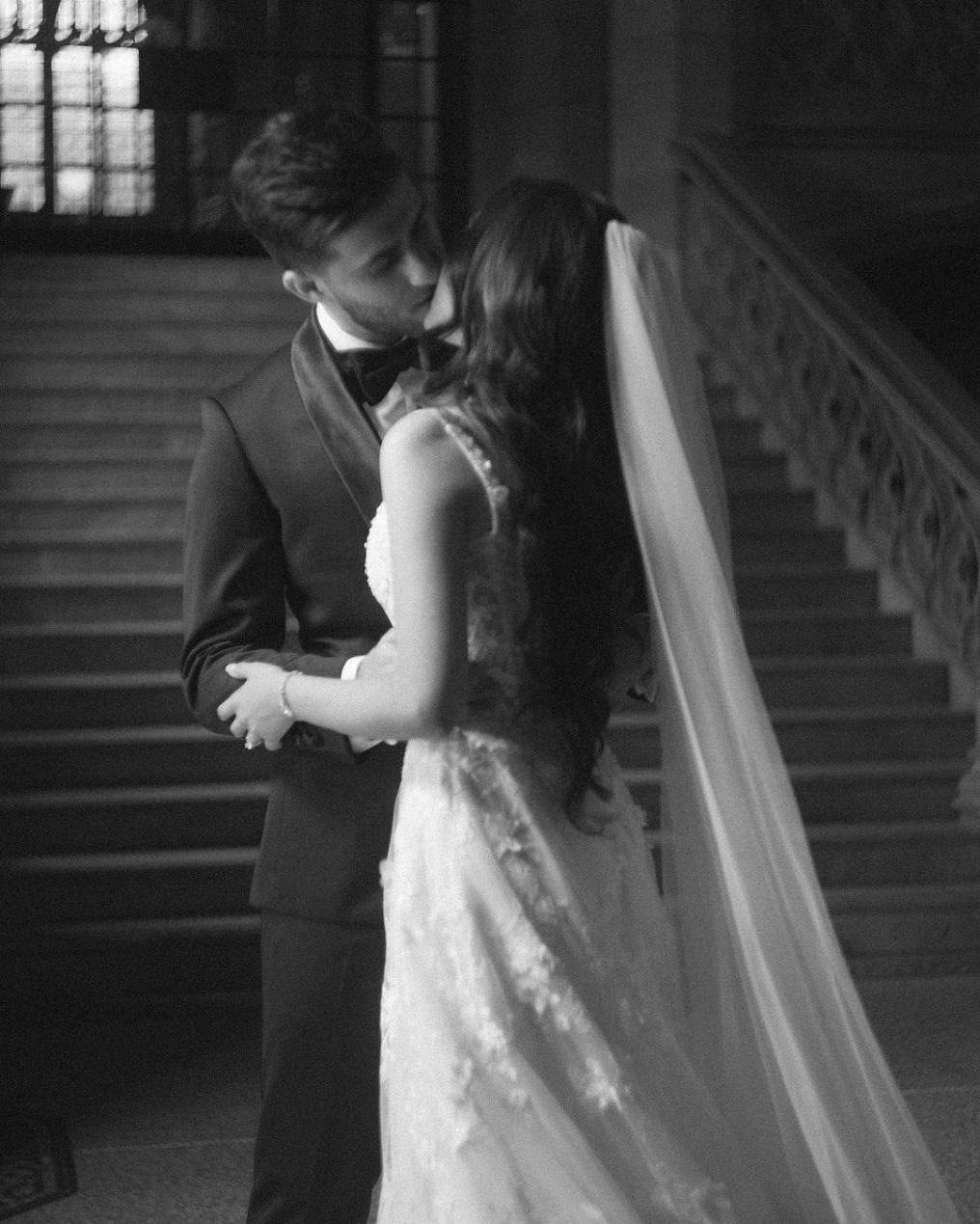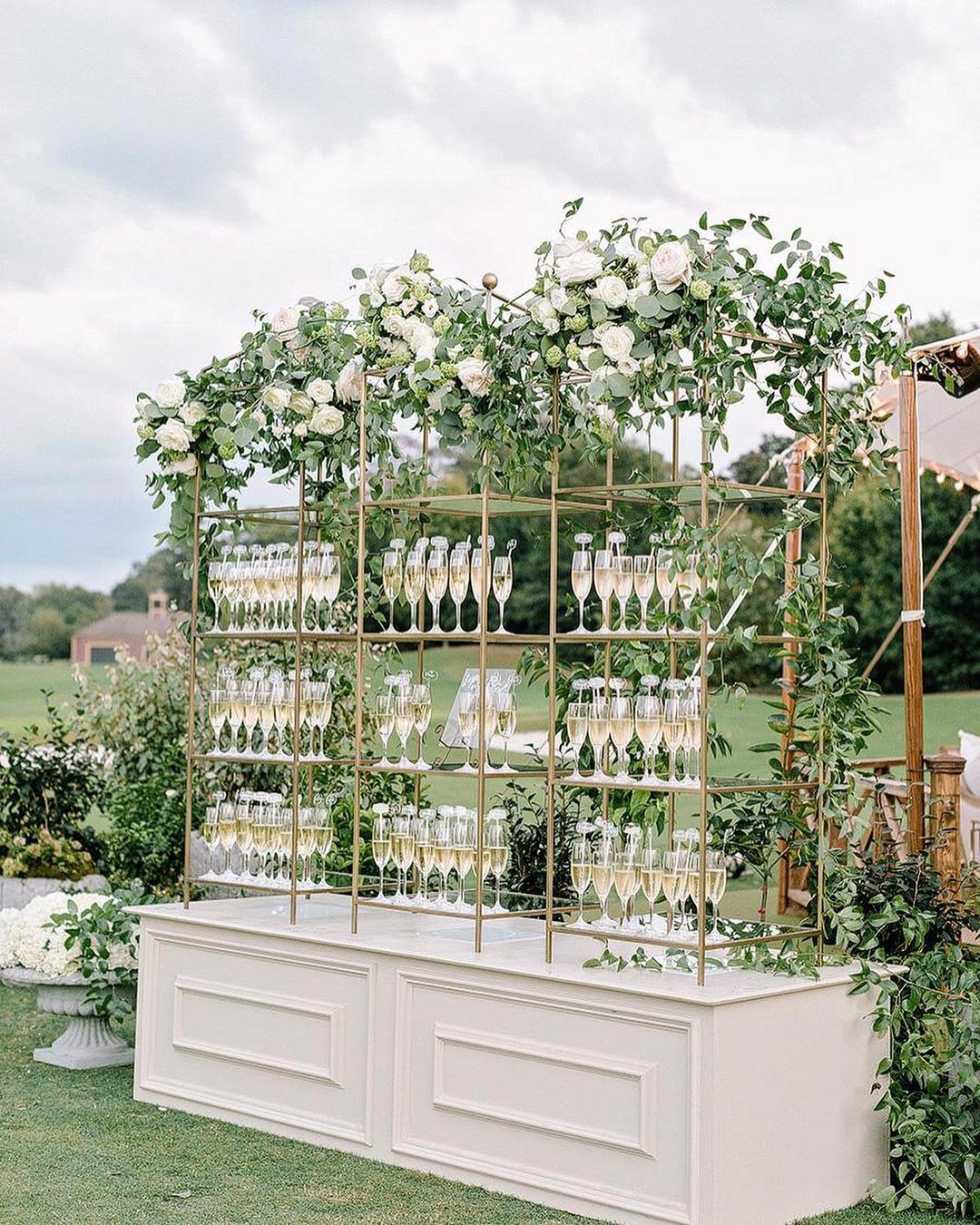What to Wear to an Indian Wedding as a Guest: Top Tips
- Author: Natali Grace Levine
- Reading time: 6 min 42 sec
- Publication date: 03/02/2024
- Updated: 06/20/2025
When you're invited to an Indian wedding, it's essential to choose an outfit that respects the rich traditions of the event while ensuring you feel both comfortable and stylish. Indian weddings, known for their vibrancy and grandeur, differ in customs and styles depending on the region, religion, and personal preferences of the families involved. Let's explore the key tips and general guidelines to help you dress appropriately for these lively and culturally rich ceremonies!

How to Dress for an Indian Wedding: Basic Rules

Being invited to an Indian wedding is a wonderful opportunity to showcase your respect and open-mindedness towards different cultures. It's important to follow certain etiquette to honor the couple and their families, ensuring that you both look and feel great during the celebration.
Choosing the Right Outfit as a Sign of Respect
When attending an Indian wedding, it's crucial to dress modestly and steer clear of attire that's too revealing. You can either wear traditional Indian wedding attire or choose formal Western outfits in rich jewel tones or classic neutrals. The way you dress is a gesture of your respect for the traditions and the importance of the event. To show your reverence for the couple and the sacredness of their special day, it's best to avoid casual or provocative clothing. By dressing elegantly, you pay homage to their momentous occasion.
Seek Guidance From the Couple
Reaching out for dress code specifics tailors your look to expectations. This shows care for the bride and groom's wishes. Abide by any color or style requests. Ask if they have vision boards or Pinterest pages to review for inspiration. Offering to run your choice by them first is thoughtful.

Know Your Role
The immediate family often wears ceremonial clothes acquired for the event. Guests enjoy creative freedom within guidelines. Seek clarification if uncertain. Understand your place as a wedding guest is different than being in the wedding party. Ask questions to ensure you complement without distracting.
Mind the Weather
Indian weddings often take place outdoors. Check forecasts and dress accordingly for heat or rain. Avoid sheer fabrics and strapless styles. Light layers work well. Research event venues to determine if air conditioning is provided or if outdoor tents are involved. Pack a pashmina or shawl for protecting bare skin or covering up inside temples.
Respect Religions
Some requests relate to attire rules in Hinduism or other faiths. Honor these by dressing modestly if unsure. Cover knees and shoulders.
Be Yourself
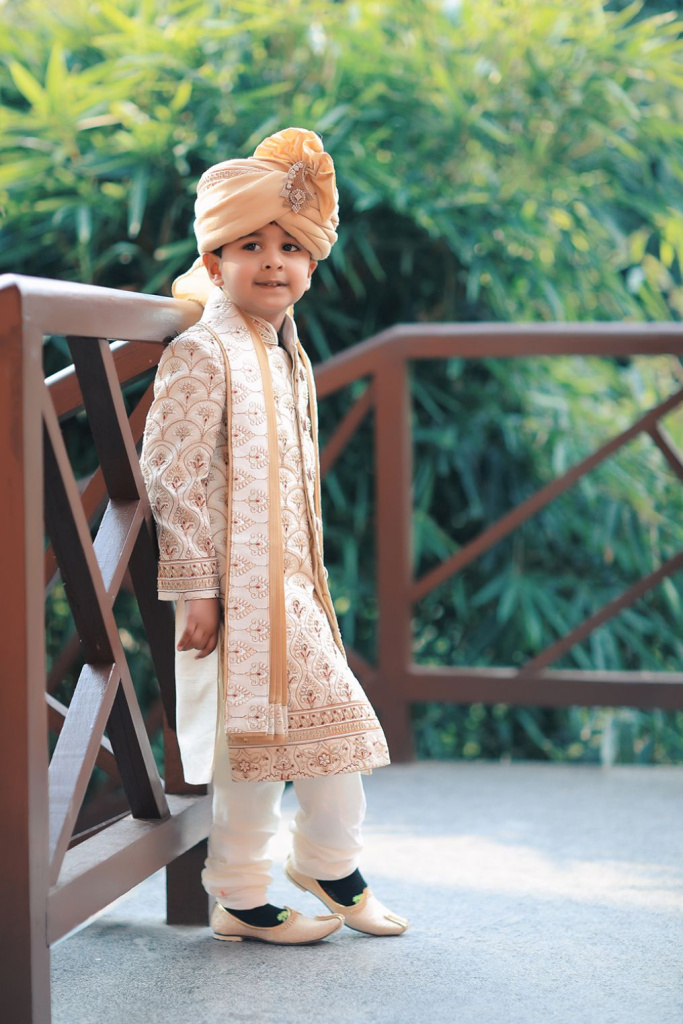
Unless requested otherwise, avoid full Indian outfits. As a guest at Indian wedding events, incorporate elements like patterns, fabrics, or jewelry to express personality. While abiding by guidelines, find small details like beaded earrings or a bindi dot to reflect your personal flair. Ask if certain colors hold significance to find a complementary shade.
Indian Wedding Guest Attire for Different Events
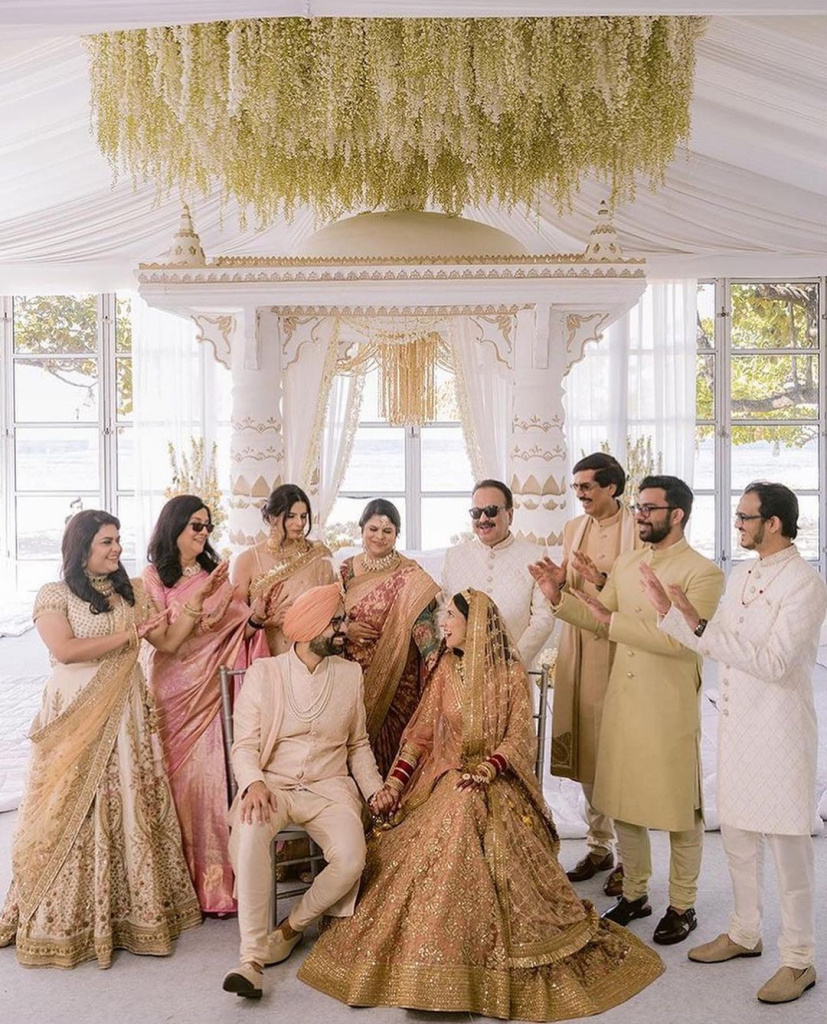
Indian weddings often span several days and events, each with its own energy and significance. What to wear to a Hindu wedding varies across these celebrations, though classic Indian formalwear works for all.
Pre-Wedding Festivities
Pre-events like the mehndi (henna application), sangeet (music night), and haldi (turmeric ritual) have a relaxed vibe. For women, salwar kameez or Indian wedding attire like Anarkali suits or flowy kurtis work well. Men can wear kurta pyjamas. Fabrics like silk and chiffon keep these fun gatherings feeling festive. Avoid revealing club wear even if the event takes place at night. Cover shoulders and knees to show respect during rituals.
The Ceremony
Opt for timeless and formal Indian attire for the wedding ceremony, whether Hindu, Muslim, Sikh, or another faith. Women might wear dresses to wear to an Indian wedding like saris or lenghas. Men could don religious garments like a churidar or bundi, or a Western suit. Stick to traditional colors and fabrics. Simple jewelry and makeup keep the focus on the couple. Temple ceremonies may require heads covered and shoes removed. Carry essentials like wraps accordingly.
The Reception
Reception attire can be glamorous or fusion wear merging Indian and Western styles. Sari gowns, lehenga dresses, gowns with dupatta scarves, and Indo-Western suits fuse modern with heritage. Avoid anything too revealing or casual like shorts and t-shirts. The reception signals celebration - have fun with bold colors and dance-friendly fabrics, while maintaining modesty and respect.

Indian Wedding Attire for Female Guests
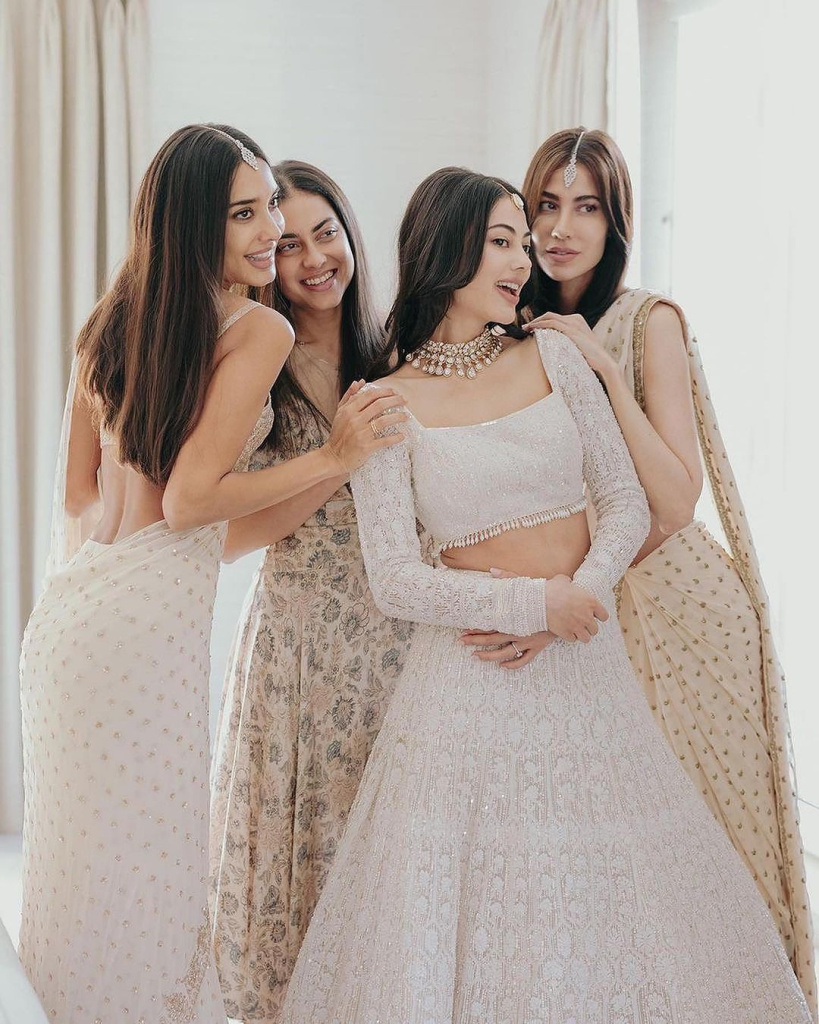
For women, Indian wedding fashion allows deep expression of personal style within a framework of tradition. Embrace these leading options while carefully respecting guidelines.
The Sari
A timeless six-yard draped silhouette, saris elegantly dress for Hindu wedding events. Pair with a choli blouse with a modest neckline and back. Choose lightweight, ornate saris in silks, chiffons, or georgettes. Accent with jewelry like bangles and earrings. Practice draping your sari properly beforehand, and walk carefully when barefoot.
Anarkali Suit
Flattering to all figures, a long kurta tunic over slim pants or leggings makes a graceful statement. Embroidered dupattas complete the look. Anarkalis cinch at the waist and flare at the bottom, creating an elegant silhouette suitable for formal events. Match dupatta scarves to the kurta or contrast them. Keep legs and arms covered during ceremonies.
Lehengas or Lenghas
Two-piece skirt and cropped blouse sets cascade in colorful, ornate fabrics. A chunni scarf adds drama. Lehengas come in many textiles like silks, chiffons, and velvets embroidered with intricate gold or silver threads and beads. The skirt flares gracefully while the choli crop top remains modest. Add minimum skin show through sheer dupattas. Ask for input on colors.
Salwar Kameez
This tunic and leggings combo offers ease and versatility. Add length, embroidery, and luxe fabrics to formalize. Salwar suits work well for more casual pre-wedding events. Choose silhouettes with higher necklines and avoid very tight or sheer fabrics. Complete the look with a dupatta scarf. Stick to traditional styles and fabrics when in doubt.
Gown and Dupatta
Fusion gowns with sheer dupatta scarves put a traditional twist on the Western classic. Show shoulders with the gown, and arms with the scarf. Gown dupatta combos fuse Indian and Western styles. Look for gowns with higher necklines and avoid low backs. Contrast or coordinate dupatta colors. Ask the bride if this fusion look suits the overall aesthetic.
Kurti and Skirt/Pants
Kurti tunics and pants or long flared skirts create a contemporary vibe. Accent with saris draped over shoulders or dupattas. Play with prints and textures. Kurtis come in modern cuts but often feature traditional embroidery and embellishment. Pair with modest pants, skirts, or leggings. Use dupattas to cover cleavage or upper arms as needed.
What Do Men Wear to Indian Weddings
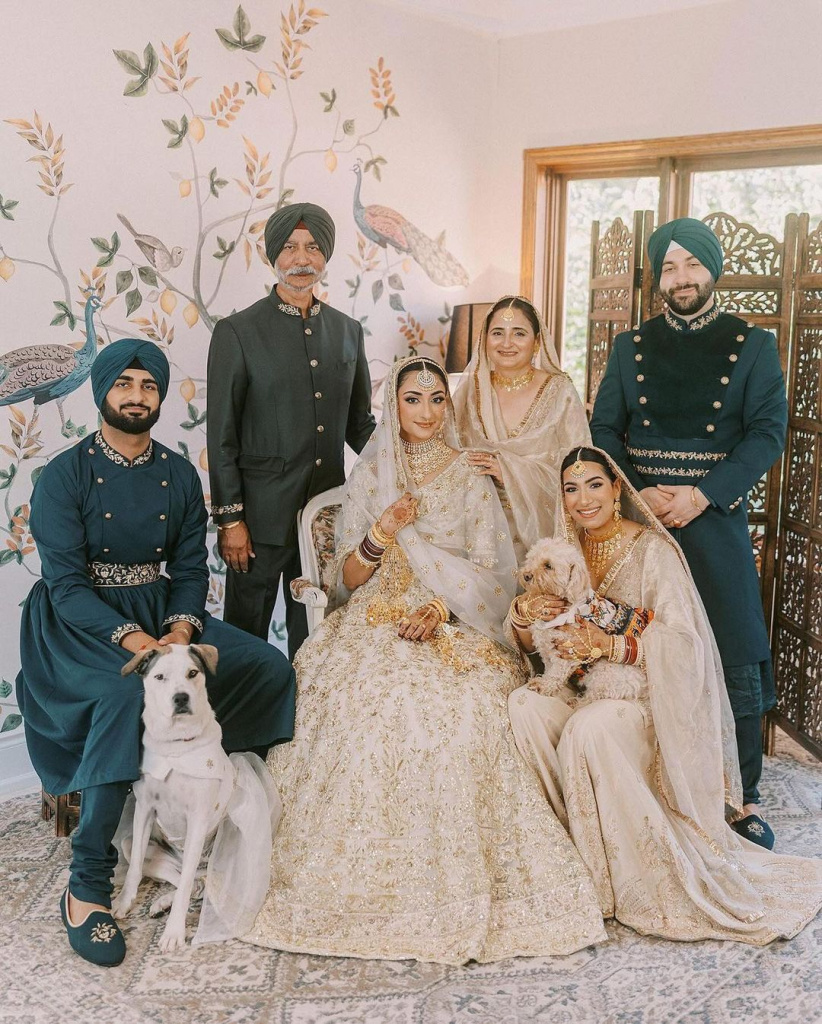
Men have classic yet diverse options that project stately elegance at Indian weddings. Consider these top choices.
Bandhgala Suit
Also called Jodhpuri suits, these formal Indo-Western pairings have a Nehru-collared knee-length jacket and matching trousers. Whites and blacks project authority. Accent with pocket squares, waistcoats, and turban headwraps. Bandhgala jackets feature side vents for ease of movement. Opt for breathable fabrics that keep you cool.
Kurta Pajama Set
Long knee-length collarless shirts and loose-fitting pants, often in lightweight cotton or silks, make timeless traditional Indian menswear. Embroidered kurtas in jewel tones or contrasting dupattas add sophistication. For variety, try bundis jackets over kurtas. Achkan jacket kurtas also formalize this look.
Sherwani
Elaborately embroidered long coats worn over fitted pants or churidars make dashing Indian wedding wear. Pair with scarves or stoles. Sherwanis have a regal, royal lineage in India and project elevated elegance. Opt for quality fabrics like silk or jacquard and ornate hand embroidery. Accessorize minimally with heritage jewelry.
Achkan Jacket
Long embroidered frock coats with stand collars, worn over churidars or trousers, create royal sophistication. Achkan jackets differ from Sherwanis in length and cut. The long hemlines pair well with churidars. Embellish with brooches, pocket squares, or sashes.
Traditional Dhoti
Wrap pants with a kurta or sherwani exude comfortable elegance. Newer dhoti styles have pleats or draping for modern flair. Traditional and relaxed, dhotis represent heritage while staying cool in warm weather. Pair with contrasting kurtas or embellished waistcoats.
Western Suit and Tie
A tailored suit and tie always works. Opt for a waistcoat or Nehru-collar for an Indian touch. Avoid black for Hindu ceremonies. Classic suits offer foolproof formality. Choose lightweight, breathable fabrics. Accent with pocket squares, vests, and ties in Indian motifs or silk. Keep silhouettes slim and well-fitted.

Indian Wedding Attire for Guests FAQs
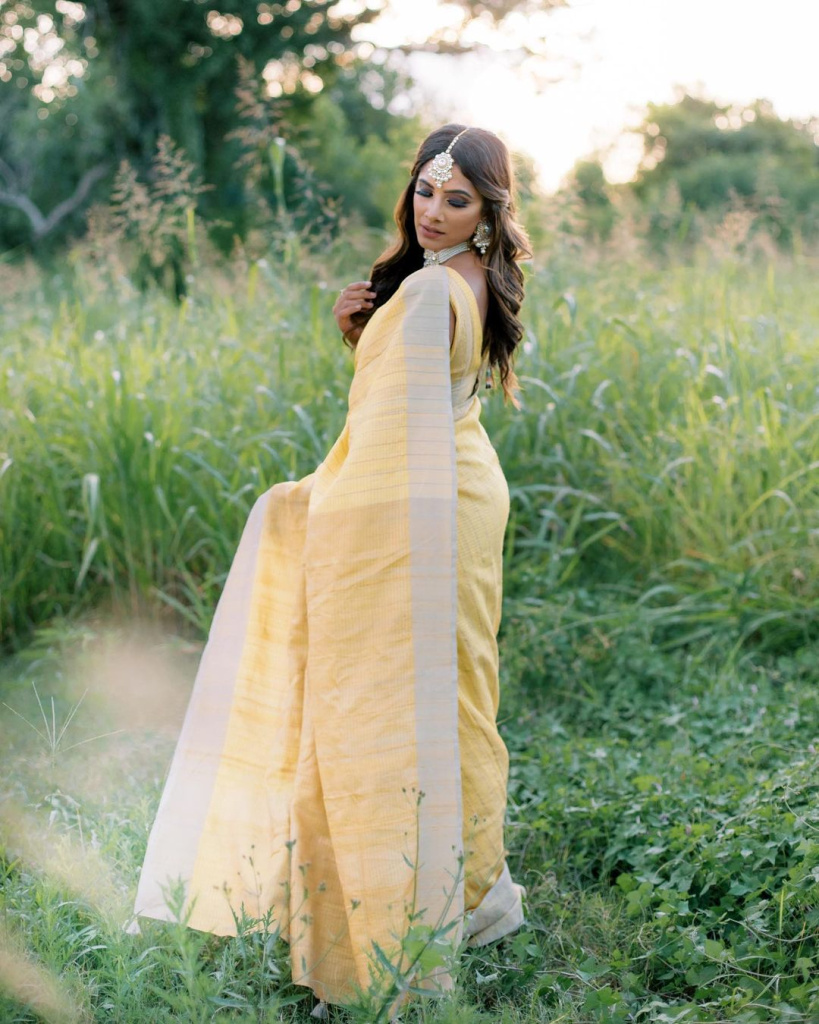
Deciphering dress codes and etiquette for Indian weddings can perplex even seasoned guests unfamiliar with the many customs and options. Questions arise around topics like wearing saris, what colors to avoid, and how formal is formal enough. Even for Indian wedding guests, events hosted abroad or bridging cultures open up grey areas. By reading up on guidelines, asking the couple directly, and using common sense, your clothing choices need not be confusing. This FAQ primer compiles key commonly asked questions to guide your sartorial selections. With these tips, you can dress to impress while honoring the bride and groom's vision.
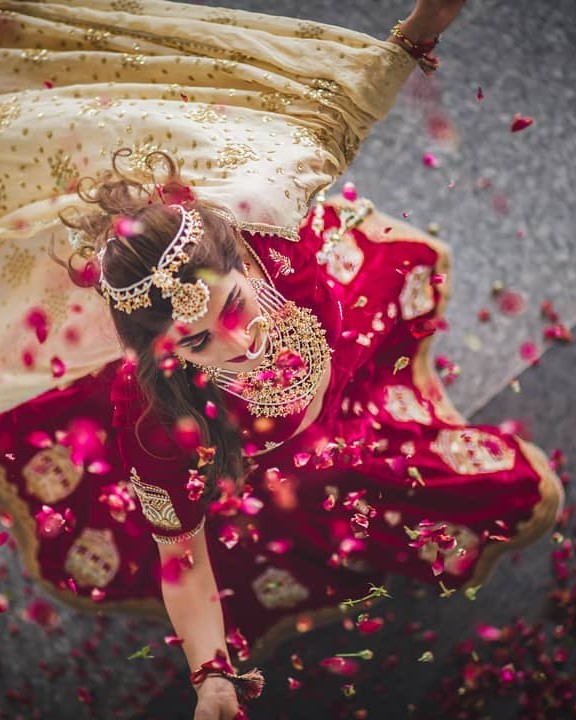
What colors work for outfits for Indian wedding guests?
Stick to jewel tones and earth tones like rich blues, greens, golds, reds, or neutrals like champagne, copper, ivory, or beige. Avoid black, white, or very pale hues unless requested by the couple. Research traditional colors that may hold significance like red for a Hindu bride's sari. Ask the couple if specific hues are integral to ceremonies.
Can you wear a sari if you aren't Indian?
Yes! Saris are stunning traditional Indian clothing for weddings for women of all ethnicities when worn respectfully. Some tips: choose lightweight, ornate fabrics like chiffon or georgette. Wrap your midriff fully. Ask an Indian friend for draping pointers. Accessorize with bangles, earrings, and bindis. Practice walking ahead of time. Show enthusiasm for cultural learning.
Can I wear a dress or skirt to an Indian wedding?
Modest dresses or skirts paired with a wrap or stole can work for women, especially Westerners. Avoid plunging necklines, high slits, low backs, or mini hemlines. materials like chiffon overlay dresses keep things formal and flowing. When in doubt, opt for pants or traditional silhouettes. Ask the bride and groom for guidance.
How do I accessorize formal Indian attire?
Jewelry, scarves, shawls, and stoles all add finishing touches. Bangles, hoops, chokers, or statement necklaces complement women's looks. Men can wear kadas bracelets, rings, or chains. Brooches and pocket squares adorn jackets. Contrasting dupattas or turbans complete men's outfits. Keep accessories minimal and meaningful.









